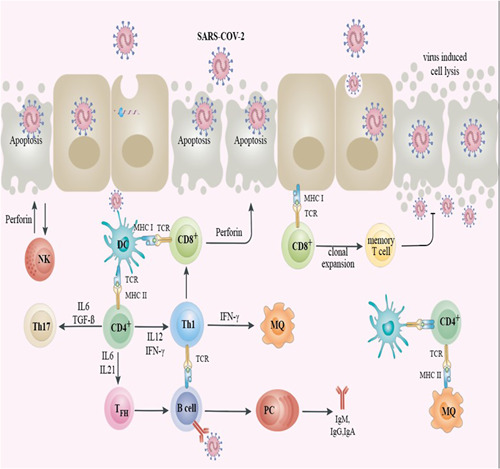Figure 2.

The schematic representation of the immune reaction against SARS‐CoV‐2. When SARS‐CoV‐2 infects the epithelium, cells may undergo lysis and significant injury to the epithelial cell during virus replication. The viral antigens were presented to CD8+ T cells by the epithelial cell. CD8+ T cells and NK cells could cytolyze the endothelial cells infected by SARS‐CoV‐2 with their perforin and granzymes, causing programmed cell death (apoptosis). DC in subepithelial recognize SARS‐CoV‐2 antigens and then the processed antigens presented to the T CD4+, causing these T cells to differentiate toward memory Th1, Th17, and memory TFH. TFH supports the development of B cells into PC and the development of specific antibodies against SARS‐CoV‐2 (IgA, IgM, and IgG). Moreover, SARS‐CoV‐2 antigens were presented to the T CD4+ cells by DCs and tissue MΦ. 33 DC, dendritic cell; Ig, immunoglobulin; MΦ, macrophage; NK, natural killer; PC, plasma cells; TFH, T follicular helper cells; Th, helper T cell; SARS‐CoV‐2, severe acute respiratory syndrome coronavirus 2.
